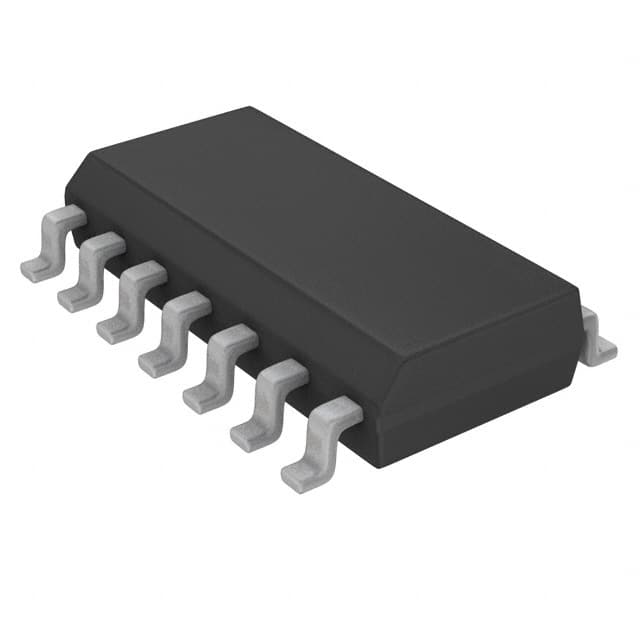Consulte las especificaciones para obtener detalles del producto.

MCP4231T-104E/SL
Product Overview
Category
The MCP4231T-104E/SL belongs to the category of digital potentiometers.
Use
It is primarily used for electronic circuitry and system applications that require variable resistance adjustments.
Characteristics
- Digital control interface
- Non-volatile memory storage
- Low power consumption
- Wide operating voltage range
- High resolution
Package
The MCP4231T-104E/SL is available in a small outline package (SOIC) with 14 pins.
Essence
The essence of the MCP4231T-104E/SL lies in its ability to provide precise and programmable resistance values, making it an essential component in various electronic systems.
Packaging/Quantity
The MCP4231T-104E/SL is typically packaged in reels or tubes, with a quantity of 250 units per reel/tube.
Specifications
- Resolution: 10-bit
- Number of Channels: Dual-channel
- Resistance Range: 0Ω to 10kΩ
- Operating Voltage Range: 2.7V to 5.5V
- Interface: SPI (Serial Peripheral Interface)
- Temperature Range: -40°C to +125°C
Detailed Pin Configuration
- VDD - Power supply voltage
- CS - Chip select input
- SCK - Serial clock input
- SI - Serial data input
- SO - Serial data output
- WP - Write protect input
- VSS - Ground
- A - Terminal A of channel 0
- B - Terminal B of channel 0
- W - Wiper terminal of channel 0
- H - Terminal A of channel 1
- G - Terminal B of channel 1
- X - Wiper terminal of channel 1
- VSS - Ground
Functional Features
- Non-volatile memory storage allows for retaining settings even when power is removed.
- SPI interface enables easy digital control and communication with other devices.
- High resolution provides precise resistance adjustments.
- Wide operating voltage range ensures compatibility with various systems.
- Low power consumption enhances energy efficiency.
Advantages and Disadvantages
Advantages
- Precise and programmable resistance adjustments
- Non-volatile memory for retaining settings
- Easy digital control interface
- Wide operating voltage range
Disadvantages
- Limited resistance range (up to 10kΩ)
- Requires SPI interface for control
Working Principles
The MCP4231T-104E/SL operates by utilizing a combination of digital control signals and internal circuitry to adjust the resistance between its terminals. The digital potentiometer stores resistance values in non-volatile memory, allowing for retention of settings even when power is removed. The SPI interface facilitates communication with external devices, enabling precise and programmable resistance adjustments.
Detailed Application Field Plans
The MCP4231T-104E/SL finds applications in various fields, including:
- Audio Equipment: Volume control, tone adjustment, and equalization circuits.
- Instrumentation: Calibration and signal conditioning circuits.
- Industrial Control Systems: Variable resistance control in motor speed control, temperature control, and lighting systems.
- Communication Systems: Signal attenuation and impedance matching circuits.
- Automotive Electronics: Climate control, audio systems, and sensor calibration.
Detailed and Complete Alternative Models
- MCP4131T-104E/SL: Single-channel digital potentiometer with similar specifications.
- MCP4251T-104E/SL: Quad-channel digital potentiometer with similar specifications.
- MAX5481EUD+: Single-channel digital potentiometer with extended resistance range.
In conclusion, the MCP4231T-104E/SL is a digital potentiometer that offers precise and programmable resistance adjustments. With its non-volatile memory storage, low power consumption, and wide operating voltage range, it finds applications in various fields such as audio equipment, instrumentation, industrial control systems, communication systems, and automotive electronics. Alternative models like the MCP4131T-104E/SL, MCP4251T-104E/SL, and MAX5481EUD+ provide additional options with similar functionalities.
Enumere 10 preguntas y respuestas comunes relacionadas con la aplicación de MCP4231T-104E/SL en soluciones técnicas
Question: What is the MCP4231T-104E/SL?
Answer: The MCP4231T-104E/SL is a digital potentiometer IC (Integrated Circuit) manufactured by Microchip Technology. It is commonly used in various technical solutions for controlling resistance values digitally.Question: What is the operating voltage range of the MCP4231T-104E/SL?
Answer: The MCP4231T-104E/SL operates within a voltage range of 2.7V to 5.5V.Question: How many channels does the MCP4231T-104E/SL have?
Answer: The MCP4231T-104E/SL has two independent channels, allowing for dual potentiometer control.Question: What is the resolution of the MCP4231T-104E/SL?
Answer: The MCP4231T-104E/SL has a resolution of 10 bits, providing 1024 possible resistance values.Question: Can the MCP4231T-104E/SL be controlled digitally?
Answer: Yes, the MCP4231T-104E/SL can be controlled digitally through an SPI (Serial Peripheral Interface) communication protocol.Question: What is the typical resistance range of the MCP4231T-104E/SL?
Answer: The MCP4231T-104E/SL has a typical resistance range of 0 to 10k ohms.Question: Is the MCP4231T-104E/SL suitable for both audio and non-audio applications?
Answer: Yes, the MCP4231T-104E/SL is suitable for both audio and non-audio applications due to its wide range of resistance values.Question: Can the MCP4231T-104E/SL be used in low-power applications?
Answer: Yes, the MCP4231T-104E/SL has a low power consumption, making it suitable for low-power applications.Question: Does the MCP4231T-104E/SL have non-volatile memory?
Answer: Yes, the MCP4231T-104E/SL has non-volatile memory, allowing it to retain its settings even when power is removed.Question: What are some common applications of the MCP4231T-104E/SL?
Answer: The MCP4231T-104E/SL is commonly used in applications such as audio volume control, motor speed control, sensor calibration, and programmable voltage references.

